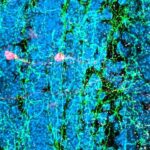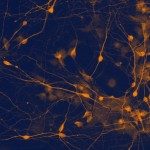Link to Pubmed [PMID] – 40720364
Link to DOI – 10.3791/68391
J Vis Exp 2025 Jul; (221):
Depression is the single largest contributor to disability worldwide, affecting 280 million people annually. Beyond reduced activity and motivation, depression has been shown to be associated with a negative bias of valence: patients find neutral and positive sensory stimuli less pleasant and negative ones more unpleasant compared to healthy individuals. In particular, olfactory hedonic bias may represent a state marker of the disease in patients and can be easily measured in mouse models. However, there are very few tests in animals to measure emotional bias in a translational way. Here we propose a protocol for a reliable evaluation of the odor valence attribution of control and depressive-like mice through the exploration of odorants associated with various hedonic values. Using this olfactory preference test and several behavioral readouts, we confirm a negative olfactory bias towards both appetitive and aversive stimuli in two distinct mouse models of depression. Importantly, this method is applicable to both male and female individuals. Finally, this protocol allows for multiple adaptations to improve the evaluation of the emotional response and can be easily combined with classical tools for live monitoring of neuronal activity.


